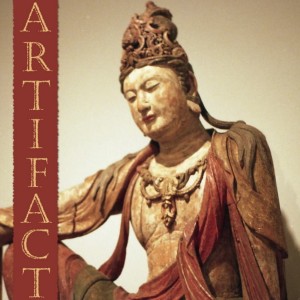
As Alex Sheremet and Ethan Pinch argue, Woody Allen has been falling out of favor for a long time now – and not only for the more obvious and superficial reasons. Critics charge him with indulging a Pygmalion complex, by which he lives out his androcentric fantasies through his films, crafting the very same women he has an interest in, then letting them loose upon the screen.
There are issues with this analysis, however: not only has Woody written some great female characters that ought to be the subjects of feminist film theory, but Bernard Shaw’s “Pygmalion” does more than meets the eye. After all, Shaw’s Eliza Doolittle is a powerful character well before her transformation, and the transformation itself belies her benefactor’s own self-conception. Woody Allen adopts a similar tactic in his films, skewering his male leads through his use of women.
In ArtiFact #17, Alex Sheremet and Ethan Pinch use this lens to analyze four films: Stardust Memories, Husbands and Wives, Midnight in Paris, and the much-neglected Another Woman.
You can also watch this discussion on our YouTube channel: https://www.youtube.com/watch?v=5BA7TanP3ls
Subscribe to the ArtiFact podcast on Spotify: https://spoti.fi/3xw2M4D
Apple Podcasts: https://apple.co/3wLpqEV
Google Podcasts: https://bit.ly/3dSQXxJ
Amazon Music: https://amzn.to/2SVJIxB
Podbean: https://bit.ly/3yzLuUo
iHeartRadio: https://ihr.fm/3AK942L
Timestamps:
0:24 – The city aesthetic, international Rust Belts, and the rural/urban divide
04:37 – Woody Allen’s urban aesthetic, the illusions of “Manhattan” (1979), moral ambiguity & how cinematic imagery can be used to play off of viewer assumptions
11:52 – The Pygmalion connection: from Ovid’s Metamorphoses to Bernard Shaw’s Pygmalion; how Woody Allen uses great female characters to skewer men; more on Manhattan, Annie Hall, Hannah and Her Sisters
38:56 – Woody Allen vs. the stigmatization of male sexuality + male neuroses
44:45 – In-depth: Woody Allen’s Husbands and Wives; the faux documentary conceit, how Judy gets some things right, Jack/Sally disconnect, character framing, the Rain arc, feminist ideology, & more
01:17:32 – In-depth: Woody Allen’s Another Woman; visual frames, Marion’s true feminism, Ingmar Bergman’s Wild Strawberries, the viewer’s necessarily partial knowledge of character backgrounds and thoughts, & more
01:33:50 – In-depth: Woody Allen’s Stardust Memories; contrasts with Federico Fellini’s 8½, the usage of “freaks” in both films, pastiche vs. homage, Sandy Bates as the “true” Woody Allen stand-in, more on masculine impositions
02:04:30 – In-depth: Woody Allen’s Midnight in Paris; contrasts with Manhattan, Owen Wilson’s acting, nostalgia vs. delusion, literary caricatures, the film’s faux closure
# # # # #
Read the latest from the automachination universe: https://automachination.com
Read Alex’s review of Stardust Memories: https://alexsheremet.com/review-of-woody-allens-stardust-memories-1980/
Read Alex’s review of Woody Allen’s Manhattan: https://alexsheremet.com/woody-allens-manhattan-not-what-you-think-it-is/
Purchase Alex’s book on Woody Allen’s films, Woody Allen: Reel to Real – https://www.amazon.com/Woody-Allen-Reel-Version-Digidialogues-ebook/dp/B00PJF2F36/
Tags: #ArtiFact, #WoodyAllen, #Pygmalion
More Episodes
Create your
podcast in
minutes
- Full-featured podcast site
- Unlimited storage and bandwidth
- Comprehensive podcast stats
- Distribute to Apple Podcasts, Spotify, and more
- Make money with your podcast
It is Free
- Privacy Policy
- Cookie Policy
- Terms of Use
- Consent Preferences
- Copyright © 2015-2024 Podbean.com







